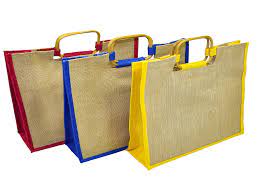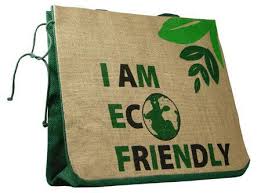Courtesy : globe-conscious.com
Eco-friendly products
For many people, making environmentally-conscious purchasing decisions is over-shadowed by social, political and/or economical factors whereby every-day survival is prioritised over trying to save the planet.
For those of us living in first-world countries however, sustainable shopping alternatives are widely accessible. Not adopting and embracing an eco-mindset is quickly becoming a social ‘shame’.
Although increased media exposure and social-shaming is a step in the right direction, tackling climate change on global scale remains a steep challenge. More and more businesses are adopting sustainable development practices in an effort to promote economic growth, environmental safety and social benefits.
According to Forbes, 77% of Australian and American people would like to learn how to live more sustainably.
Tools such as Google Trends highlight the increase in relative popularity for search queries (in the US) such as ‘sustainable products’.

What are some examples of eco-friendly products?
Something eco-friendly is ‘designed to have little or no damaging effect on the environment’, according to the Cambridge Dictionary.
You can think of eco-friendly products as items that are produced using natural, raw materials.
Common examples include:
– Using organic cotton over conventional cotton
– Using recycled polyester over virgin polyester
– Using natural rubber instead of synthetic materials
A natural or raw material is ‘any product or physical matter that comes from plants, animals, or the ground,’ .
Some every-day examples of eco-friendly items include:
– Eco-Friendly/Bamboo Toothbrushes
Most (non-electrical) toothbrushes are made of plastic (BPA-Chemical) materials which do not biodegrade or decompose properly.
– Reusable / Biodegradable Cups
Finding materials that are not chemically-rich as well as being BPA and phthalate-free.
Compostable cups, like food waste, can be disposed and taken to a composting facility.
– Beeswax Wraps (Baking Paper Alternative)
Beeswax wraps have both antibacterial and anti-fungal properties. They offer a water tight, plastic alternative to food concealment.
Something eco-friendly is ‘designed to have little or no damaging effect on the environment’, according to the Cambridge Dictionary.
You can think of eco-friendly products as items that are produced using natural, raw materials.
Common examples include:
– Using organic cotton over conventional cotton
– Using recycled polyester over virgin polyester
– Using natural rubber instead of synthetic materials
A natural or raw material is ‘any product or physical matter that comes from plants, animals, or the ground,’
Some every-day examples of eco-friendly items include:
– Eco-Friendly/Bamboo Toothbrushes
Most (non-electrical) toothbrushes are made of plastic (BPA-Chemical) materials which do not biodegrade or decompose properly.
– Reusable / Biodegradable Cups
Finding materials that are not chemically-rich as well as being BPA and phthalate-free.
Compostable cups, like food waste, can be disposed and taken to a composting facility.
– Beeswax Wraps (Baking Paper Alternative)
Categorizing sustainable and eco-friendly items
Common environmtally-friendly ‘product categories’ include:
– Biodegradable
– Renewable
– Solar-powered
– Natural materials (straw, hemp, bamboo, organic cotton)
– Organic
– Reused
– Recycled

How to tell if a product is eco-friendly?
Identifying whether or not an item is eco-friendly can often be confusing.
It is often the case that brands will use vocabulary associated with nature and the environment in order to appear more ‘eco-conscious’.
When checking product packaging, look out for any of the following organisations:
– Energy Star (energy saving electronics and appliances)
– Forest Stewardship Council Logo(paper and wood products)
– USDA Organic Seal (organic cosmetics and foods)
– Green Seal (environmentally-safe cleaning products)
How to tell if product-packaging is earth-friendly?
Environmentally-friendly packaging is packaging that, over a period of time, reduces its environmental footprint.
In order to qualify as ‘earth-friendly packaging’, materials must fall into one of three categories:
– Recyclable
– Reusable
– Biodegradable
With consumers becoming more environmentally-conscious, manufacturers are under more pressure than ever to adhere to ethical and environmentally production processes.
This can occur in various ways, including:
– A reusable lifecycle
– Consideration for social and economic factors
– Using raw 100% recycled or raw materials
– Minimising the production process
Adopting sustainable packaging is paramount in the fight against climate change.
In recent times, the global volume of plastic production has significantly increased, from 2.3 million tons in 1950 to 448 million tons in 2015. Production is expected to double again by 2050…
It is estimated to take at least 400 years for most single-use plastic items to break down.
Most plastics contain additives which makes them stronger, more flexible and more durable. It is these additives that cause plastic to be so resistant to mother nature.
The environmental impacts of plastic
Each year, it is estimated that approximately 300 million tonnes of plastic materials are produced.
From this, around 8 million tonnes of plastic enters our oceans.
Synthetic plastic materials are made up of chemical combinations, making decomposition extremely difficult.
Macroplastic:
“Macroplastics are relatively large particles of plastic found especially in the marine environment (typically more than about 5 mm)”
Microplastic:
“Microplastics are very small pieces of plastic that pollute the environment”
Microplastics are not a specific kind of plastic, but rather any type of plastic fragment that is less than 5 mm in length, according to the the National Oceanic and Atmospheric Administration.
Worryingly, plastic waste is forecasted to quadruple between 2010 and 2050.
Countries such as China, Indonesia, Philippines, Thailand and Vietnam have huge changes to make (these countries create more plastic waste than all other countries combined).
Focusing on biodegradable and reusable plant-based materials is going to be pivotal if we’re going to be successful in keeping our oceans clean.
Although scientists can accurately estimate how long it takes plastic to break down, a precise time frame is unknown.
This is because different plastic materials contain different percentages of chemical components, meaning that one piece of plastic may be more environmentally harmful in comparison to another, due to higher levels of toxic materials.
As well as landfill pollution, plastic waste causes signifant ocean and marine damage. Plastic fragments are ingested by ‘filter-feeding organisms’, such as plankton and other ocean creatures.
Animals higher up the food chain may bioaccumulate larger quantities of microplastics as a result.
Plastic waste that survives for thousands of years in our oceans can also serve as a transportation device for invasive species that disrupt habitats.
Banning single-use plastic bags
In many states across the US, plastic bag usage is not prohibited. More and more states (and countries around the world) are beginning to ban plastic bag distribution full-stop.
In 2014, California became the first state in the US to prohibit the use of single-use plastic bags. Other countries such as Germany are also preparing to impose similar bans/laws.
Examples of sustainable alternatives for single-use plastic bags include:
– Organic cotton bags
– Linen bags
– Hemp bags
– Jute bags
– Non-woven polypropylene bags
Rest assured, there are endless plastic packaging alternatives out there. Here we wrote an article about 20 natural materials.

The environmental benefits of sustainable products
As people’s concern for the environment increases, so does the popularity of eco-friendly products.
More businesses are beginning to incorporate sustainable development goals in the work place, i.e. paying more attention to a products social, environmental and economic advantages.
Appreciating the environmental benefits of sustainable products means understanding the consequences that arise from non-eco-friendly materials.
Earth-friendly products are safe for both the environment and for surrounding communities, since sustainable products pose no threat to the health of individuals.
Environmentally-friendly materials are manufactured using significantly cleaner production processes and often powered using renewable energy sources.
Most sustainable products are produced using recycled materials (this also ensures that the item can be recycled once disposed).
According to the European Commission: ‘The global market for low carbon environmental goods and services is estimated to be worth around €4.2 trillion.’ You can read the full article here.
In recent years, more and more conventional power sources are being substituted for energy-efficient methods, as more manufacturers begin to harness natural resources such as the sun, water and wind.
Sustainable products are a part of the ‘closed loop system’, a system whereby recycled products are used as raw materials for new products.
When the materials life-cycle comes to an end, the waste is reused as a raw material itself.




